
The first time I saw a snapshot with a character in full levitation, I found myself engrossed, staring at the image for 15 minutes in total amazement. He could not conceive how the image had been captured. I was captivated by the story he told me during that period of time. Something surreal, magical and imposing. As time went by, my interest in the world of images increased and I discovered some of the secrets that the great photography professionals hid. I found that while it was certainly not magic, the conceptualization of the image and the execution could be quite difficult and meticulous, almost the work of an image magician. Thanks to the photographers who have mastered the techniques used in levitation, we can now understand the secrets of these compositions and they do not have any waste.
We all tend to think that levitation images look magical, but they don't seem magical, they really are magical. Because magic is everything that defies the impossible and this is precisely what levitation snapshots do, they challenge what is natural. These types of compositions have been around for quite some time, and have been performed all over the world and yet every time you or I take a look at one, our eyes can't help but be drawn to them. But it is no wonder, some of the images are so well constructed that it is difficult to understand the "secret" behind them and that is why they are probably so fascinating; create curiosity, almost like a riddle, almost like a challenge that they serve us on a tray wrapped in a beautiful wrapping paper.
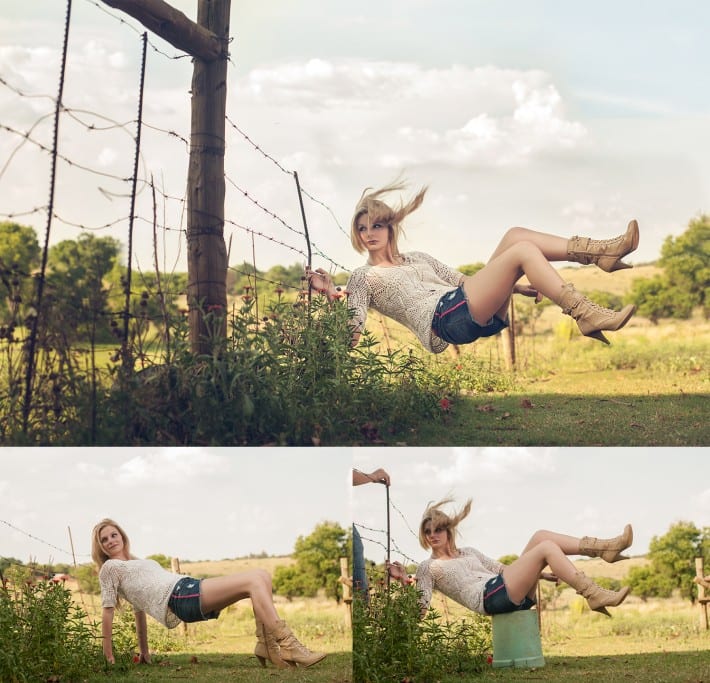
One of the characteristics that most often stands out in this type of composition is its simplicity. The floating object concept is so powerful that it stands on its own and requires few compositional elements. With a floating object, we can afford to work in a minimalist composition with complete peace of mind. Rey Vo Lution, an experienced levitation photographer, claims that the composition can not only be simplistic, but also it must be. He attaches great importance to this point.
It is important to note that post-processing plays an important role in levitation images and it is impossible to obtain final results without Adobe Photoshop or similar software. Furthermore, the final image will most likely be a composition made up of two or more photos. It will be very important for us to have a good editing program to be able to make good integrations in our compositions.
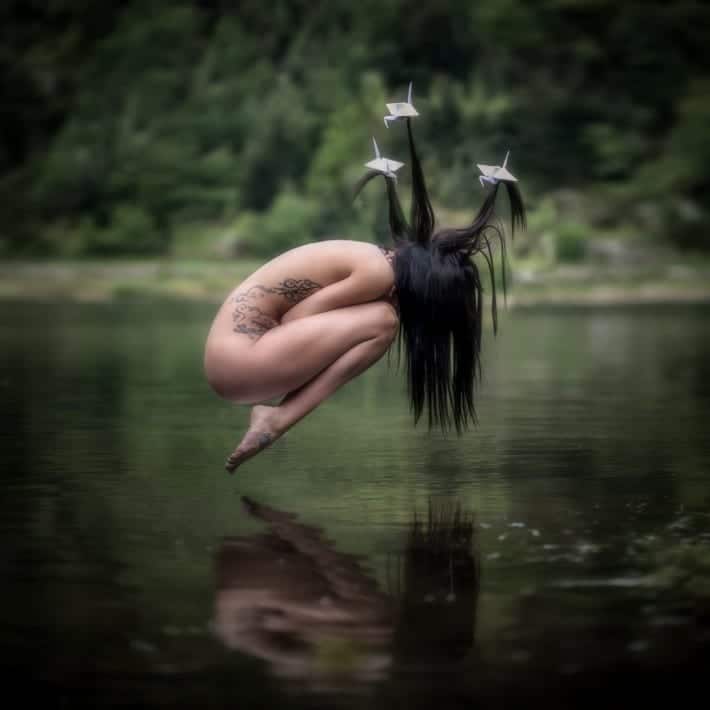
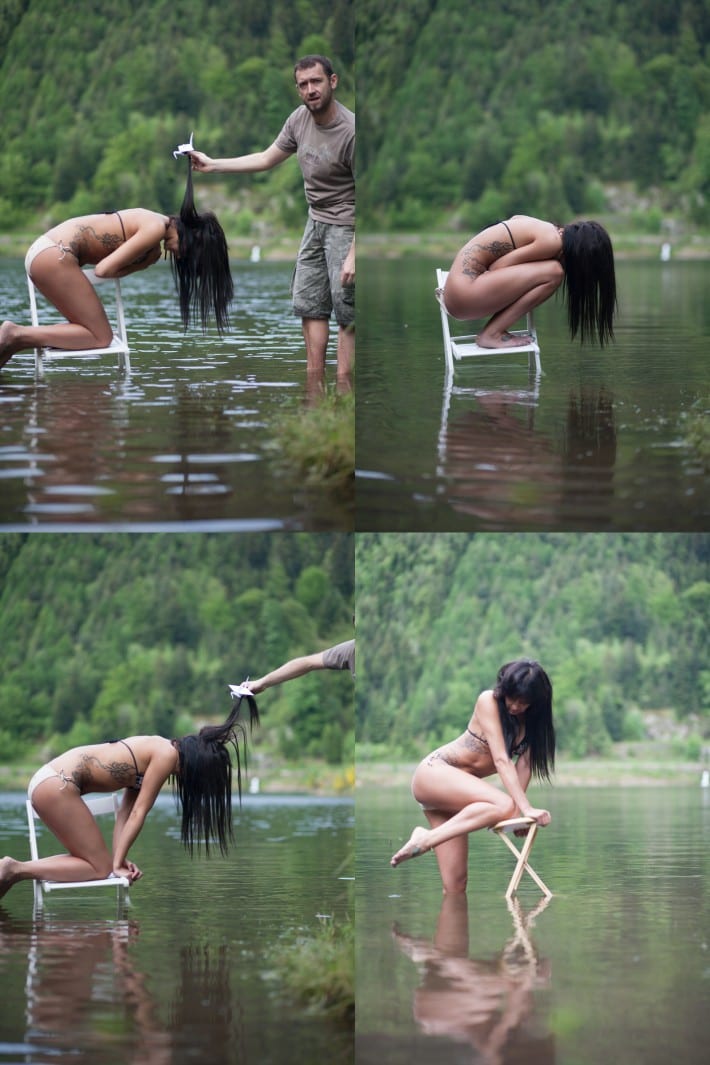
The two ways to carry out these compositions are either through the fusion of two images of different origin (which can be quite complicated, especially for the angle, textures and lighting to be integrated perfectly) or through the fusion of two images taken in an identical position and setting, placing the camera on a tripod. Generally, in the lower image (the one we place in the lower layer) it is usually of the empty stage or room in question and the upper image with the character in question located in the ideal position with all those fastening elements that are necessary. Next a layer mask on the upper image and it will begin to extract all those fastening elements that we need to extract to create the levitation effect.
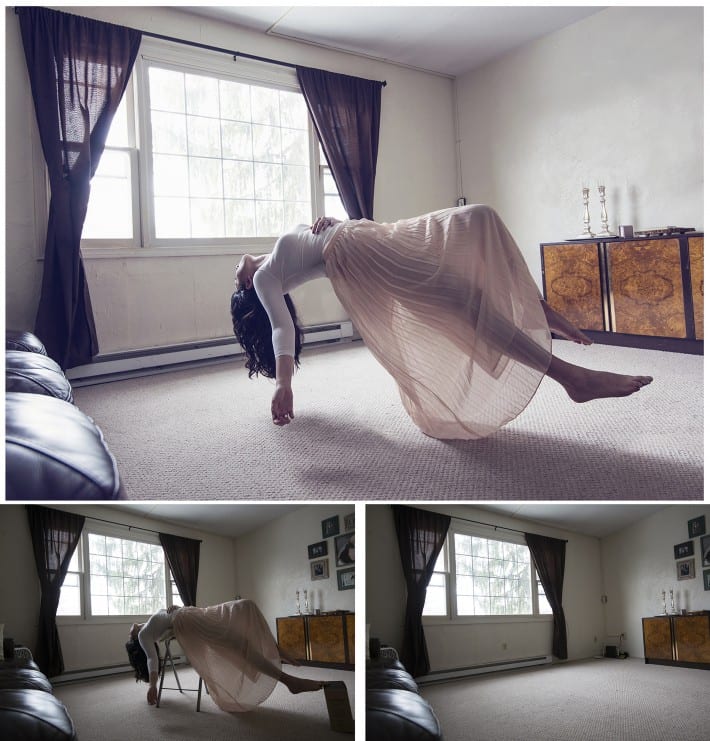
We will see that the conceptualization phase here is very important. For this, it is highly recommended that we get hold of a notepad and pencil and let's make the possible sketches. This will help us develop the idea in greater depth and detail. Brooke Shaden advises us to do this, it is the most precise and technical way to specify our composition before moving to the action itself.
Marina Gondra tells us that levitation difficulties depend on the character's position. Sometimes you just have to take a simple jump and other times your body needs to appear to levitate in strange positions. In consecuense, clothes and hair they have an important role in photography. If the character is supposed to be floating, so will the clothes and hair.
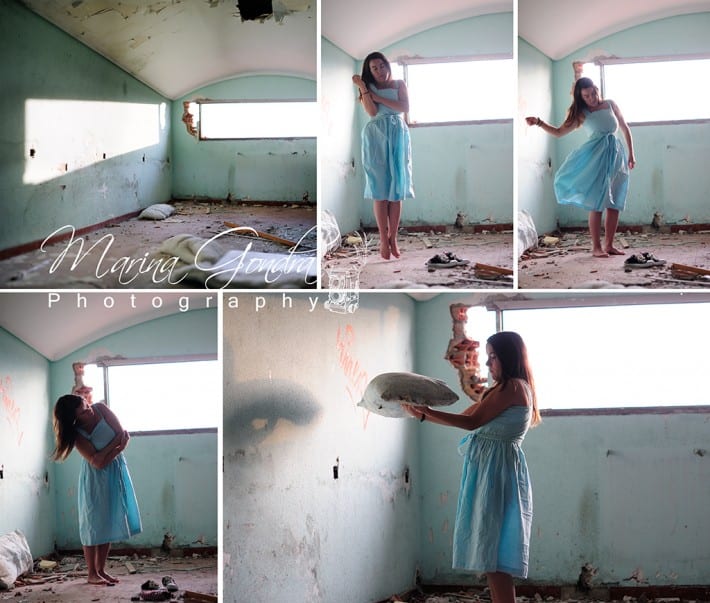
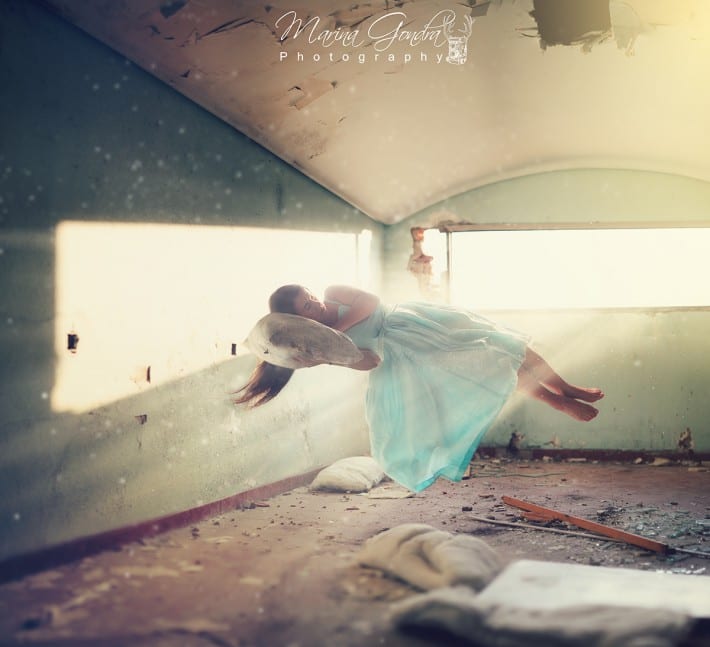
There are always two essential elements in every levitation composition: The background and the character. Attention should always be paid to depth of field. The Brenizer method can help us create a very shallow depth of field, which will give us greater realism and a higher final quality.
On the other hand, the angle of shot at is extremely crucial, although this is a rather individual matter. The angle low angle view it can be very expressive and effective. This will give us the feeling that the subject is much higher and further from the ground.
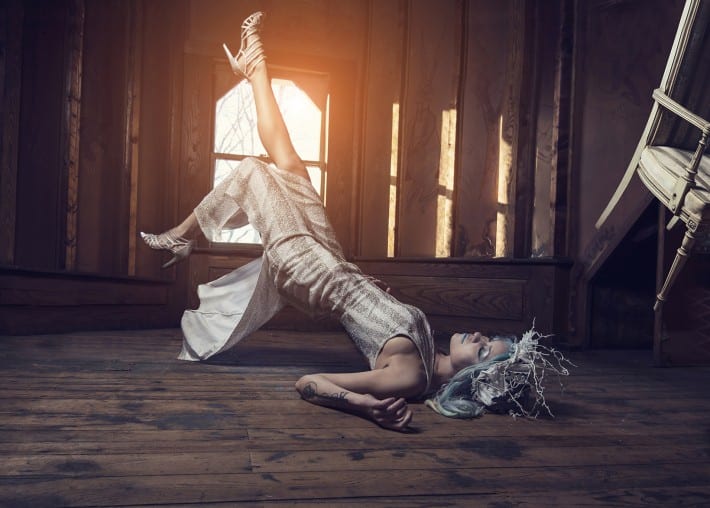
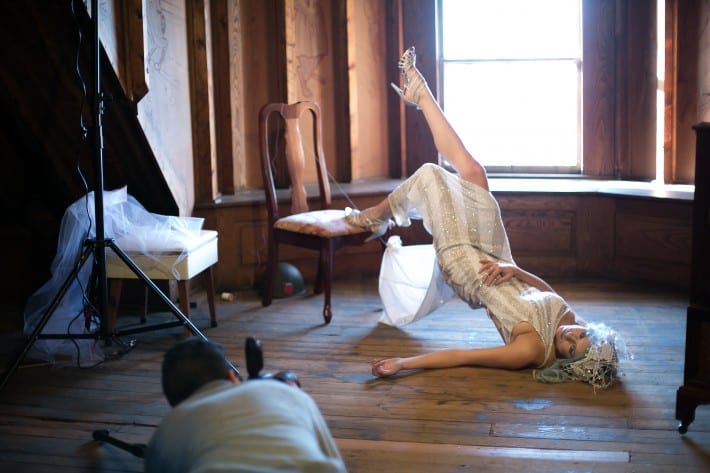
Once the background is captured, the image of the subject must be taken. It is recommended to try to take the pictures of the character and the setting in the same place and at the same time. When it comes to independent compositions, inconsistencies often appear. Lighting and shadows are some of the first things that we must address, so it is highly recommended that the shooting of photographs take place in the same space and place. If this is not possible, the lighting will have to be processed in the postproduction, and this can be quite difficult.
Another very important part of our image is capturing the subject's body in a natural position. If the subject is jumping or lying down, body language it has to coincide with levitation. The photographer Marina Gondra sometimes practices in front of a mirror before taking a self-portrait.
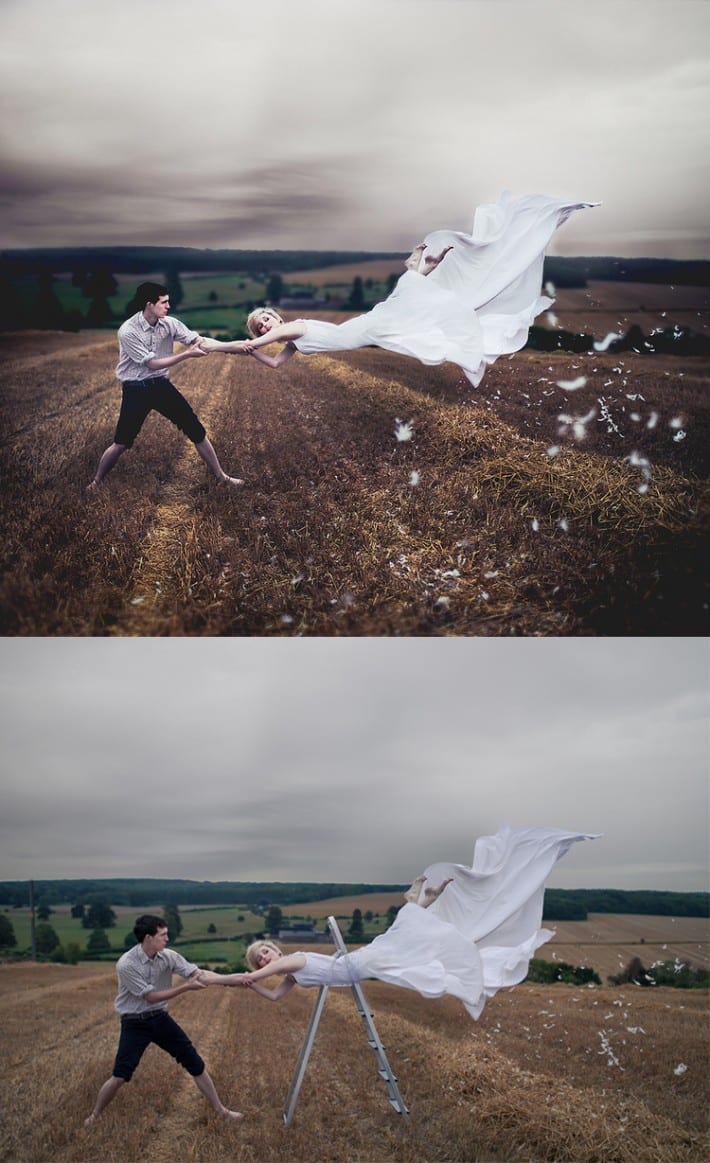
It is recommended that we try to shoot with a shutter speed of at least 1/200 or higher. If there is not much light, the ISO. Remember that with a slow shutter speed, the image will be blurred.
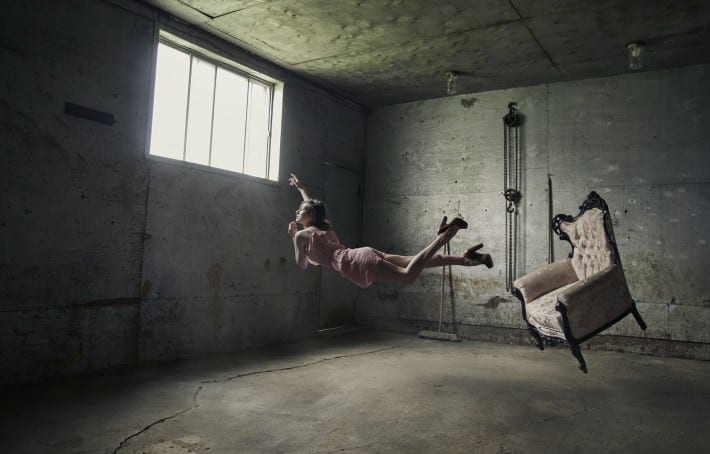
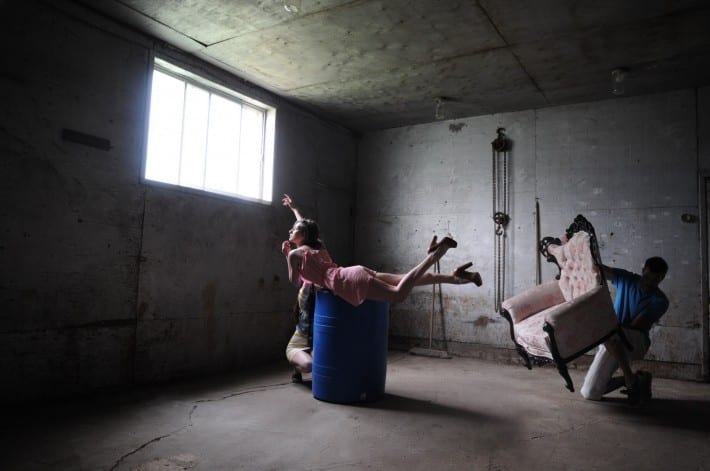
One of the most interesting things about this type of composition is that it is about working with our creativity and our technique at another level. Technique, imagination, and above all freedom, are united in levitation and gravitational magic in photographic compositions.
The article is very interesting, but I've been wanting to know the name of the authors of the photographs.
Nice article. Without going into great technical depths, he is able to show how to successfully obtain these levitation photographs. Thank you.
I supposed it so, since Photoshop exists.